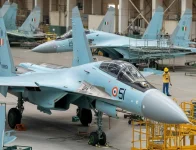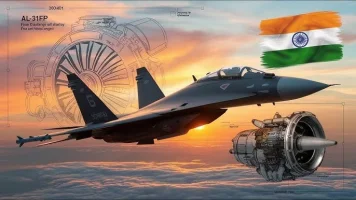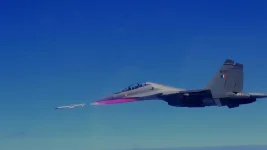- Views: 2K
- Replies: 10
India's strategic combination of the Su-30MKI combat aircraft and the BrahMos-A supersonic cruise missile has reportedly demonstrated a significant capability to overcome advanced Chinese-manufactured air defence systems.
This development is reshaping strategic considerations for nations operating Su-30 aircraft, particularly those in Southeast Asia concerned about regional military dynamics involving China.
Reports indicate that the Indian Air Force (IAF) effectively showcased this offensive power against Pakistan air defence, suggesting an ability to penetrate sophisticated air defence networks like the HQ-9 and HQ-16 systems, which are utilized by China and have been exported to its allies.
The BrahMos-A, an air-launched version of the Indo-Russian supersonic cruise missile, has been integrated with India’s fleet of over 260 Su-30MKI fighter jets since 2019.
This formidable missile travels at approximately Mach 2.8 (nearly three times the speed of sound) and can deliver a conventional warhead of 200-300 kg with high precision over a range of 290 kilometres.
Future upgraded versions are planned to extend this reach to 450 kilometres.
The BrahMos-A's design features, including its ability to fly at low altitudes, skim the sea surface, and perform complex evasive manoeuvres during its terminal phase, make it exceptionally challenging for contemporary air defence systems to detect and intercept.
It is understood that during operation Sindoor focused on potential threats along India's frontiers against Pakistan, IAF Su-30MKIs armed with BrahMos-A missiles have demonstrated the capacity to neutralize critical assets such as radar stations and surface-to-air missile (SAM) batteries, thereby potentially compromising adversary's air defence shield.
Chinese air defence systems, notably the long-range HQ-9 (often compared to Russia's S-300 series) and the medium-range HQ-16, are extensively deployed by China and have also been acquired by countries such as Pakistan, Turkmenistan, and Serbia. While these systems are considered advanced, they reportedly face significant challenges in countering the sheer speed and agile flight characteristics of the BrahMos-A.
The missile's capacity to execute abrupt, high-G manoeuvres in its final attack phase is designed to defeat defence systems that typically rely on intercepting targets with more predictable flight paths. Assessments following such engagements have indicated the precise destruction of targeted radar equipment and missile launchers, exposing vulnerabilities in these widely deployed air defence systems.
This demonstrated effectiveness of the Indian Su-30MKI and BrahMos-A pairing offers a noteworthy strategic option for other countries operating Su-30 aircraft, particularly in Southeast Asia and Africa, regions observing China's expanding military presence.
For instance, Vietnam, which operates a fleet of around 35 Su-30MK2 jets, faces ongoing maritime disputes with China in the South China Sea, where Chinese HQ-9 systems are reportedly installed on reclaimed islands.
Similarly, Malaysia, with its 18 Su-30MKMs, and Indonesia, operating 11 Su-30MK/MK2s, have expressed concerns regarding regional security.
These nations, already proficient with the Su-30 platform, could potentially integrate the BrahMos-A to significantly enhance their deterrent posture against technologically advanced air defences.
The IAF's operational success in leveraging this aircraft-missile combination provides a proven method for neutralizing sophisticated air defence networks, a capability that remains limited globally.
The Su-30MKI's inherent advantages, such as its extended operational range, substantial payload capacity, and modern avionics, are powerfully complemented by the BrahMos-A's velocity and precision. This synergy creates a potent weapon system capable of striking targets deep within defended airspace while minimising the risk of interception.
For existing Su-30 operators, adopting the BrahMos-A could represent a cost-efficient means of upgrading their current fleets to address evolving security threats, rather than undertaking more expensive acquisitions of entirely new aircraft or missile platforms.
India's advancements have garnered international attention. Reports suggest that Vietnam has shown considerable interest in acquiring the BrahMos-A missile, with discussions reportedly in progress regarding potential defence sales.
Malaysia and Indonesia, having previously explored other versions of the BrahMos missile for their coastal defence requirements, may now also assess the air-launched variant to strengthen their air power.
Beyond Southeast Asia, African nations such as Algeria, which operates approximately 58 Su-30MKA aircraft and contends with various regional security issues, might also find this Indian system an attractive option, especially in light of increasing Chinese defence technology exports across the African continent.




